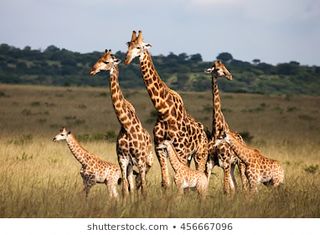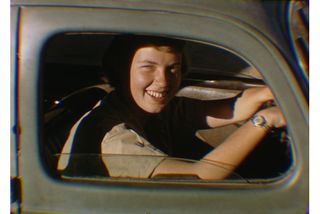Dreaming
Anne Innis Dagg: Courageous Researcher Who Loves Giraffes
An interview with a remarkable scientist about her seminal research.
Posted January 13, 2020
I recently had the pleasure of watching an extremely interesting and wide-ranging documentary titled The Woman Who Loves Giraffes, a detailed story produced and directed by Alison Reid about the life of a pioneering and courageous researcher, author, and feminist, Dr. Anne Innis Dagg.1,2
This wide-ranging film not only covers Dr. Dagg's trials and tribulations of conducting fieldwork on a little- known animal beginning in the 1950s but also summarizes her seminal research, the difficulties of being a woman in academics and "running into the old boys' network," and how her research was dismissed as not being "academic" as were many behavioral studies decades ago.3

I've long been a fan of Dr. Dagg's research—she has always been the go-to researcher on these remarkable animals—and was pleased that she and Ms. Reid could answer a few questions about this remarkable film. Our interview went as follows.
Why did you produce and direct The Woman Who Loves Giraffes?
Alison Reid: When I read Anne’s book Pursuing Giraffe: A 1950’s Adventure, I knew I had to make a film about it. I was captivated by the story of an adventurous young woman who is talented, smart, and would stop at nothing to follow her dreams. Anne went to South Africa when she was 23 years old in order to study the magnificent animal she loved so much. That was an incredibly brave thing to do in 1956 during apartheid. I initially envisioned a scripted film, like Gorillas in the Mist, but when I found out Anne was returning to Africa after over half a century away I thought it was historic and asked if I could go with her and film it. She kindly said yes, and that’s how the documentary was born.
Please tell us about your long term research on these fascinating animals and what got you started. What's so unique about these amazing beings?
Anne Innis Dagg: When I was four years old my mother took me to The Brookfield Zoo in Chicago. That’s where I saw my first giraffes and fell in love with them right away. I asked my parents if they would buy me a book about giraffes, but they said there was no such book. As I grew up I continued to want to learn about them. After I completed my Master's degree in biology I knew I had to get to Africa to study them in the wild.

Giraffes are like no other creature on earth. They are beautiful to look at. They have long legs, a long neck, and graceful movements. They also have the largest heart of any land mammal. I could go on and on about what makes them special.
I was the first person to do a scientific study of any African animal in the wild, so I had to invent what to do. I decided to make notes about the behavior of each giraffe every five minutes. I stayed in my car so I didn’t interfere with their behavior. I compiled the information I collected and wrote papers that were published in scientific journals. Eventually, I co-wrote a textbook on giraffes with Bristol Foster called The Giraffe: Its Biology, Behavior and Ecology.
Who is your intended audience?
Alison Reid: We’ve been surprised at the broad range of people who connect with Anne’s story. The obvious audience is comprised of people with an affinity for animals—particularly giraffes—conservationists, and also women who connect with Anne’s career struggles; feminists; women in STEM.
Many men see the film out of an obligation to go with their wives and end up loving it. I can’t tell you how many men have come out of the cinema telling me they cried and how much Anne’s story touched them. Seniors respond particularly well to the film, but we’ve also had audiences comprised entirely of younger people—primary and secondary school students—who’ve been incredibly enthusiastic and ask the most insightful questions.
What are some of your major themes and messages?
Alison Reid: The Woman Who Loves Giraffes is a hybrid of a woman’s adventure story and a giraffe/conservation film. It has been compared to films like Searching for Sugarman, RBG, and Hidden Figures.
Three major messages are: 1) It's important to follow your dreams and to know that no matter how grim things may seem, time can bring about wonderful change; 2) We all lose so much when women (and others) are discriminated against and prevented from pursuing their passions/talents; 3) Giraffes are vulnerable to extinction and things need to change dramatically in order for them to survive in the wild.
One of the themes that runs throughout is the importance of the mother-daughter connection. Anne’s mother, Mary Quayle Innis, instilled such confidence in Anne that it didn’t enter her mind that she couldn’t something if she put her mind to it.
Are you hopeful things will change the ways in which people interact with giraffes and other nonhumans?
Anne Innis Dagg: Yes, I am hopeful because awareness is rising and people are talking about it much more. There is growing acknowledgement that each species, including giraffes, is an integral part of the ecosystem and we humans need to change our behavior to protect all animals on our planet including ourselves.
What are some of your current projects?
Alison Reid: I recently directed two episodes of Good Witch, a television series for Hallmark. I am also following up on my initial vision of developing a scripted project about Anne. Believe it or not, there are many compelling layers to her story that weren’t addressed in the documentary and I am dying to tell them!
Is there anything else you would like to tell readers?
Both Anne Innis Dagg and Alison Reid: Please go to The Woman Who Loves Giraffes to find out where to see the film and how you can help save giraffes. Follow your dreams and passions. If you put your mind to it you will find a way!
_______
Thank you, Anne and Alison. There is so much more to this outstanding film and I hope it enjoys a broad global audience. It surely should inspire young women to pursue their dreams and clearly shows that giving up was/is not an option. Anne's work took the guesswork out of who giraffes are and how to conserve them, and it's wonderful to see all of the accolades she receives from researchers and non-researchers alike. I've always felt that Anne's story deserved a wide audience, and now it will.
References
Notes:
1) The film opens January 10th at Quad Cinema in New York City, February 21st at Laemmle Theatres in Los Angeles, and is being distributed in the U.S. by Zeitgeist Films in association with Kino Lorber.
2) Anne Innis Dagg also is an avid animal rights activist. She is a big supporter of animal rights organizations and has marched for animal rights causes over the years, and her writing on animals extends beyond giraffes in such books as: Animal Friendships, The Social Behavior of Older Animals, and Giraffe: Biology, Behaviour and Conservation. Dr. Dagg was recently appointed to the Order of Canada. For more information click here.
3) The film's description reads: In 1956, four years before Jane Goodall ventured into the world of chimpanzees and seven years before Dian Fossey left to work with mountain gorillas, 23-year-old biologist Anne Innis Dagg made an unprecedented solo journey to South Africa to study giraffes in the wild. In THE WOMAN WHO LOVES GIRAFFES Anne (now 86) retraces her steps, and with letters and stunning, original 16mm film footage offers an intimate window into her life as a young woman, juxtaposed with a first hand look at the devastating reality that giraffes are facing today. Both the world’s first ‘giraffologist’, whose research findings ultimately became the foundation for many scientists following in her footsteps, and the species she loves have each experienced triumphs as well as setbacks. THE WOMAN WHO LOVES GIRAFFES gives us a moving perspective on both.




